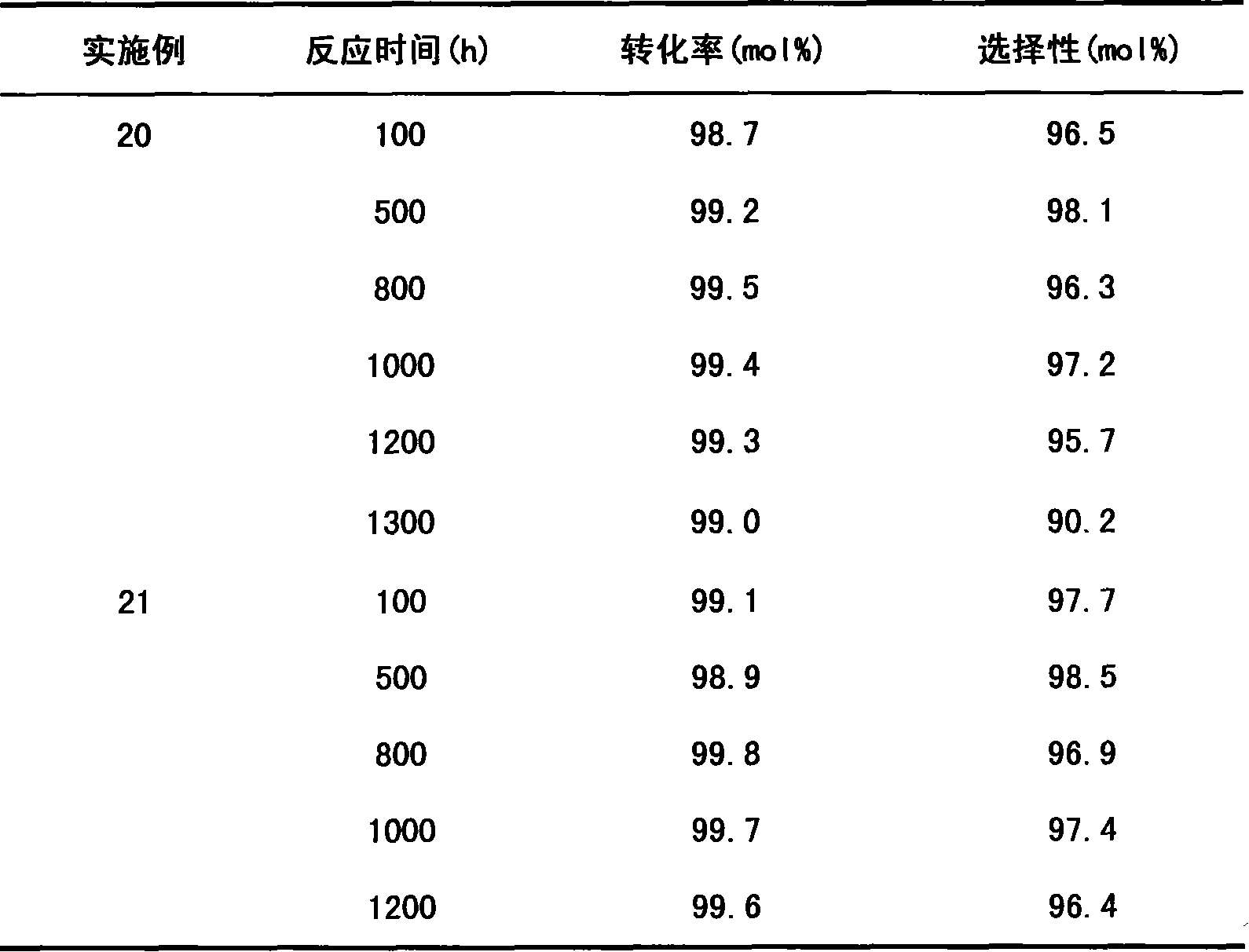Method for preparing isobutyl alcohol by methylacrolein hydrogenation
A technology of methacrolein and isobutanol, which is applied in the preparation of hydroxyl compounds, chemical instruments and methods, and the preparation of organic compounds, and can solve the problem of no reported method of MAL hydrogenation to isobutanol and no hydrogenation catalyst Stability information, easy deactivation of metal hydrogenation catalysts, etc., to achieve the effect of easy large-scale industrial production, simple post-treatment process, and high selectivity
- Summary
- Abstract
- Description
- Claims
- Application Information
AI Technical Summary
Problems solved by technology
Method used
Image
Examples
Embodiment 1-5
[0023] Catalyst preparation and activity test by mechanical mixing method:
[0024] Mix the soluble salts or oxides corresponding to the active components in the catalyst composition with the carrier evenly, dry at 100°C for 12 hours, and roast at high temperature in the air for 4 hours to prepare the catalyst precursor. After molding to 20-40 mesh, take 50g and put it into a fixed bed for reaction. Reduction activation and catalyst performance evaluation were carried out in the device.
[0025] The composition and preparation conditions of the catalyst prepared by the mixing method in table 1
[0026] implement
example
catalyst
composition
Roasting temperature
degree(℃)
restore
Reduction temperature
degree(℃)
When restoring
room (h)
1
2
3
4
5
8%Ni / HY
12%Cu / HZSM-11
4%Ru-0.5%Sn / HM
15%Ni-2%Zn / HZSM-5
23%Cu-18%Mn / HMCM-41
550
380
200...
Embodiment 6-12
[0031] Catalyst preparation and activity test by impregnation method:
[0032] Immerse an appropriate amount of the carrier into the measured aqueous solution of the soluble salt of the catalyst active component, evaporate to dryness in a water bath at 80°C, dry at 90°C for 12 hours, and roast at a high temperature for 4 hours to obtain a catalyst precursor. After molding to 20-40 meshes, take 100g Reduction activation and catalyst performance evaluation were carried out in a fixed-bed continuous reaction unit.
[0033] Table 3 Catalyst composition and preparation conditions prepared by impregnation method
[0034] implement
example
Catalyst composition
Roasting temperature
degree(℃)
restore
Reduction temperature
degree(℃)
When restoring
room (h)
6
7
8
9
10
11
12
0.5%Pd / AC
23%Co-4%Fe / HMCM-41
1%Pt / TiO 2
1%Rh-2%Mn / HZSM-5 ...
Embodiment 13-16
[0039] Catalyst preparation and activity test by co-precipitation method:
[0040] Prepare the mixed solution of the measured soluble salt of the catalyst active component, and add the precipitating agent ammonia water, Na 2 CO 3 Aqueous solutions such as alkaline substances, the resulting precipitates are aged at 75°C, then filtered, washed to neutral, dried at 90°C for 12 hours, and roasted at high temperature to obtain a catalyst precursor. 2 -95%N 2 Mixed gas, at 0.5MPa, H 2 Airspeed 800h -1 Reduction under the conditions for 4h to obtain the catalyst. Catalyst performance evaluation was carried out in a batch tank reactor.
[0041] Add an appropriate amount of catalyst and 300g of MAL solution into a stainless steel autoclave, seal the reactor, replace the air in the reactor with hydrogen, fill it with hydrogen at a certain pressure, and start to heat up. When the required temperature was raised, the stirring was started to start the reaction, and the reaction was s...
PUM
 Login to View More
Login to View More Abstract
Description
Claims
Application Information
 Login to View More
Login to View More - R&D
- Intellectual Property
- Life Sciences
- Materials
- Tech Scout
- Unparalleled Data Quality
- Higher Quality Content
- 60% Fewer Hallucinations
Browse by: Latest US Patents, China's latest patents, Technical Efficacy Thesaurus, Application Domain, Technology Topic, Popular Technical Reports.
© 2025 PatSnap. All rights reserved.Legal|Privacy policy|Modern Slavery Act Transparency Statement|Sitemap|About US| Contact US: help@patsnap.com

